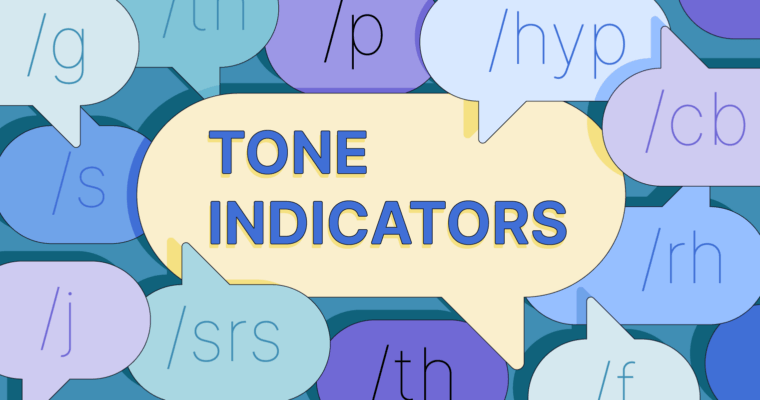
How many times did you hear the phrase “tone and voice” in English class? You thought you didn’t need it, but now you’ve sent an email to your coworker that was supposed to be professional but apparently came across as passive-aggressive, or texted a friend with congratulations that read dry and unfeeling, or sent an email to your boss about a project and used just one too many exclamation points.
“Tone and voice” can be easy to mix up, especially when they’re said together so often. They’re distinct ideas, but they both point to the same thing: your way of expressing yourself. Unlike spelling, grammar, and punctuation, tone and voice have to do with how you express what you’re saying—not the accuracy of the rules.
Speaking voice, writing voice
Think about the way people in your life speak. There’s something to the cadence of your mom’s voice when she greets you on the phone, the way your best friend uses big adjectives to describe small things, the consistent way the barista at your local coffee shop says “Good morning!”
These unmistakable style quirks are called voice when applied to writing. Your writing voice can consist of words you do or don’t use when you write, turns of phrase you’re fond of, the way you write a sentence, or the way you structure an argument—your voice is the fingerprint you leave on your writing so that someone can identify it as yours.
A company’s voice consists of the aspects of the brand that don’t change. This could be words or phrases the company should never use, or characteristics it always has, like “witty” or “friendly.” Think of how you associate with companies on social media, and you’ll get the idea.
You can write in your own voice, or you can adopt someone else’s—if you’re writing a press release at work, you’re likely to use the straightforward, businesslike voice that one would associate with a company. But on your personal blog, the voice you write with could be witty, informal, and totally your own.
Watch your tone
Now, think about different situations in which you’ve had to interact with people. How do you know when they’re annoyed? Eye rolls, short responses, visible disinterest, attempts to leave the conversation. Maybe they’ll inflect what they say so you can tell they’re being sarcastic.
These signs are more subtle, and they’re subtle when translated to writing, too. Signs of tone in writing can be translated in word choice, punctuation, even emojis.
Think about the phrase “Let’s talk soon.” How do these two read?
The first one reads more serious and urgent, and the second one reads much more playful and fun.
For a deep dive on tone, check out our explainer on what tone is and how to use it.
Finding your voice
Even if you only ever write for work, you have your own distinctive writing voice. Your emails, tweets, and texts all give the people you communicate with an idea of who you are.
There are several ways to hone your voice. If you just want to develop a writing voice, try keeping a journal and writing a page per day. Pick a topic and write about it until you fill up the page, not allowing yourself to second-guess the words you put down. Doing this every day will keep your mind used to expressing thoughts in writing, and eventually, you’ll find the sentence structures, words, and expressions that make your writing yours.
If you’re trying to be more aware of your voice, try reading your emails and texts out loud before you send them. They should sound as natural to say as they do to read. This will take some practice—you may find that when you read your own writing out loud, it sounds stilted or you run out of breath trying to read long sentences. When you run across these situations, think about how you’d convey the same information if you were talking, and try to write it that way instead (minus the ums and ahs, of course).
Honing your tone
If you find yourself wondering how your message comes across to others, try writing messages in many different ways, experimenting with punctuation, sentence structure, and word choice, and read them out loud, imagining to yourself how you’d read these messages if you received them.
You can also check out our explainer for advice on how to write in a way that’s both direct and compassionate.






